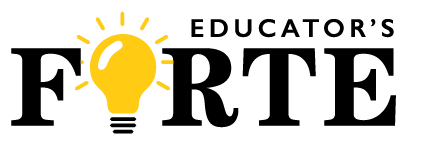Teachers play a critical role in shaping the future of our students, and their ongoing professional growth is essential for ensuring high-quality instruction in the classroom. Gone are the days of one-size-fits-all professional development workshops that offer generic strategies and leave teachers feeling disconnected and disengaged. Today, there is a growing understanding that teachers, like their students, have unique needs and preferences when it comes to their own professional growth. In this first part of our blog series, we will explore the benefits of personalized professional development opportunities for teachers and the students they teach. We will delve into how personalized professional development allows teachers to tailor their own learning experiences, address their specific areas of need, and embrace lifelong learning that will continuously evolve their professional practice. Let’s dive in and explore the value of personalized professional development for teachers! 
1. Allows Teachers to Tailor Their Learning
One of the key advantages of personalized professional development is that it allows teachers to tailor their learning experiences to their own interests, needs, and goals. Teachers are professionals with diverse backgrounds, experiences, and expertise, and their professional development should reflect that individuality. When teachers have the autonomy to choose the topics, formats, and timing of their professional learning, they are more likely to be engaged, motivated, and invested in their own growth. This can result in improved instructional practices, increased student achievement, and a more positive school culture.
2. Address Teachers’ Specific Needs
Personalized professional development also allows teachers to address their specific areas of need. Through a needs assessment process, teachers can identify their strengths and areas for growth, and then, in collaboration with school leaders, design their professional development plan accordingly. This targeted approach enables teachers to focus on their own unique challenges and opportunities, which can lead to more effective and relevant learning experiences. For example, a teacher who struggles with classroom management may choose to participate in a professional development program that focuses specifically on behavior management strategies, while a teacher who is interested in integrating technology into their lessons may opt for opportunities to learn about effective use of educational technology tools. By addressing their individual needs, teachers can develop new skills and strategies that directly impact their students’ learning outcomes.
3. Learn the Way You Learn Best
Personalized professional development also recognizes that teachers are lifelong learners who continuously evolve in their practice. Just as students learn at different paces, teachers also have different learning preferences. Some teachers may thrive in a collaborative group setting, while others may prefer self-directed learning or one-on-one coaching. Personalized professional development allows teachers to choose the format that best suits their learning style, which can enhance their engagement and retention of new knowledge and skills. This flexibility also acknowledges that teachers have busy schedules and responsibilities outside of the classroom, and that their professional development should be adaptable to their individual needs and constraints.
4. Benefits Students
In addition to benefiting teachers, personalized professional development can also have a positive impact on students. When teachers engage in ongoing, relevant, and targeted professional learning, it directly affects their instructional practices, which in turn can improve student learning outcomes. For example, a teacher who participates in a personalized professional development program on differentiated instruction may be able to better meet the diverse needs of their students in the classroom, leading to increased student engagement and achievement. When teachers are continuously supported in their professional growth, students are more likely to receive high-quality instruction that meets their individual needs and promotes their academic success.  By recognizing that teachers are professionals with unique needs and preferences, and by providing opportunities for them to tailor their learning experiences, address their specific areas of need, and choose the format that best suits their learning style, we can empower teachers to continually evolve and improve their instructional practices. In Part 2 of this blog series, we will delve into what constitutes “good” professional development for teachers based on existing research in the field. We will explore key characteristics of effective professional development initiatives and discuss the benefits of sustained professional development opportunities over one-and-done training events. Interested in personalized professional development at your school? Sign Up Today
By recognizing that teachers are professionals with unique needs and preferences, and by providing opportunities for them to tailor their learning experiences, address their specific areas of need, and choose the format that best suits their learning style, we can empower teachers to continually evolve and improve their instructional practices. In Part 2 of this blog series, we will delve into what constitutes “good” professional development for teachers based on existing research in the field. We will explore key characteristics of effective professional development initiatives and discuss the benefits of sustained professional development opportunities over one-and-done training events. Interested in personalized professional development at your school? Sign Up Today
